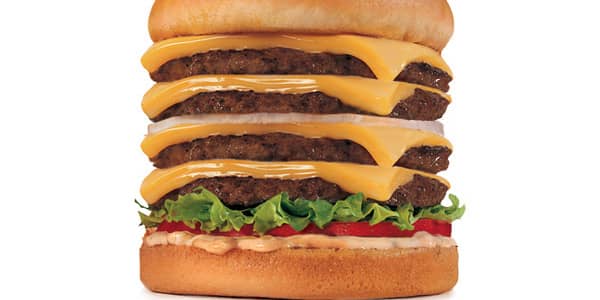Retail’s Hottest Emerging Markets
Global management consulting firm A.T. Kearney takes an annual look at which emerging markets are ripe for retail expansion.
Their study looks at 30 emerging countries and grades them on a number of factors, including an assessment of country risk, population size, and wealth as well as the country’s current retail saturation.
The effect of global economic challenges as well as rising tensions in the Middle East and North Africa shook up the top 10 quite a bit this year, to the benefit of many South American countries, which fared very well during the recession with an impressive economic growth rate of 6 percent.
With the growth of consumer spending sluggish at best in many developed markets, retailers have little choice but to expand their businesses to new markets if they want to compete.
You can’t afford to not think about global expansion,” said Hana Ben-Shabat, A.T. Kearney partner and co-leader of the study.
Click ahead to see which countries are the most attractive to retailers.
By Christina Cheddar Berk
Posted 06 June 2011
10. Turkey
Ranking last year: 18
Population: 78,785,548 (July 2011 est.)
GDP per capita: $12,300 (2010 est.)
Turkey jumps eight spots to 10th place, helped by strong growth in the country’s economy. GDP grew by a strong 8.9 percent last year as it recovered from the global recession.
Also, more women are entering the work force, which is driving up demand for a number of products such as convenience items. Retailers have been building more shopping malls, especially in larger cities such as Istanbul.
In medium-sized cities, smaller format stores are being introduced.
(Pictured: Shopping on the main street of Istanbul modern city center.)
9. United Arab Emirates
Ranking last year: 7
Population: 5,148,664
GDP per capita: $9,200 (2010 est.)
Retailers have been flocking to the UAE for several years now, and the market is getting saturated.
It’s no surprise why retailers liked this market. The country receives large numbers of tourists, and consumer spending grew 9 percent last year. What’s more, retailers often see the UAE as an attractive entry point to retail expansion in the Middle East.
However, A.T. Kearney said consumers in the region are still a bit cautious in the wake of the recession, and have been saving more. They also feel their purchase power is on the decline as prices are rising faster than wages.
(Pictured: Women shopping for shoes in Dubai.)
8. Peru
Ranking last year: 9
Population: 29,248,943 (July 2011 est.)
GDP per capita: $9,200 (2010 est.)
Peru is the first of several South American countries to make the top 10. Strong retail growth has intensified the demand for retail space.
Most of the interest is being driven by strong economic growth in the country. For the past five years, Peru has experienced 5 percent year-over-year GDP growth.
(Pictured: Cusco, Peru)
7. Saudi Arabia
Ranking last year: 4
Population: 26,131,703
GDP per capita: $24,200 (2010 est.)
Don’t let Saudi Arabia’s slide in the ranks of the survey fool you. The country is still an attractive market for retailers.
Consumer spending is growing rapidly, and its population is very young and has high levels of discretionary income.
Still, there are a few negatives. The government requires retailers to hire Saudi employees, and merchants often need to comply with religious laws such as Halal principles for food preparation.
(Pictured: Saudi women walk at a shopping mall in the Saudi capital of Riyadh.)
6. China
Ranking last year: 1
Population: 1,336,718,015 (July 2011 est.)
GDP per capita: $7,400 (2010 est.)
China’s growth has been phenomenal, with numerous retailers, including luxury brands, rushing into the country. But competition is getting fierce in the larger cities, which means there may be better opportunities in some of the second- and third-tier cities.
(Pictured: Wangfujing shopping district, China.)
5. Kuwait
Ranking last year: 2
Population: 2,595,628
GDP per capita: $51,700 (2010 est.)
Kuwait is the highest-ranked Middle Eastern country. It is small, but attractive because of its highly urbanized population and exceptionally high disposable income.
According to A.T. Kearney, 96 percent of the population lives in cities, and 65 percent are between the ages of 15 and 39.
The government provides its citizens with high levels of economic support. For example, in January 2011, the government provided citizens with $3,500 and free food staples for 13 months to help them improve their living conditions and to celebrate Kuwait's 50th anniversary of its independence.
(Pictured: People inside mall in Kuwait City)
4. India
Ranking last year: 3
Population: 1,189,172,906 (July 2011 est.)
GDP per capita: $3,400 (2010 est.)
India slipped to No. 4 this year, but the country remains an attractive market for expansion. The population continues to urbanize and consumers are becoming more discerning.
As with China, there is a lot of competition among retailers in the largest cities as many retailers rushed into this market. But big opportunities remain in other areas of the country.
GDP continues to grow at a brisk pace, with the economy up 9 percent last year. Also, the size of the labor force is growing quickly.
(Pictured: Indian shoppers walk through a Saket shopping mall in New Delhi.)
3. Chile
Ranking last year: 6
Population: 16,888,760 (July 2010 est.)
GDP per capita: $15,500 (2010 est.)
Chile is the first of the three South American countries grabbing the highest rankings in the study.
The country’s economy recovered quickly from the global recession. A.T. Kearney estimates the country’s retail sector will grow 10 percent in 2011 as a result of the growing purchasing power of the country’s middle class as well as its young, urban population.
(Pictured: Santiago, Chile skyline)
2. Uruguay
Ranking last year: 8
Population: 3,308,535 (July 2011 est.)
GDP per capita: $14,300 (2010 est.)
Uruguay’s fortunes have mostly been tied in the past to its larger neighbors, and right now, the country is benefitting from those relationships.
With a relatively small size and strong economic growth, Uruguay is an appealing choice for retailers looking for more “contained” markets to test concepts as they look to enter other South American markets, according to A.T. Kearney’s research.
(Pictured: Tourists go shopping at "Twenty Street" in Punta del Este, one of the most exclusive seaside resorts of Latin America, 140 km from Montevideo.)
1. Brazil
Ranking last year: 5
Population: 203,429,773
GDP per capita: $10,900 (2010 est.)
Investment is flooding into Brazil as it prepares to host the 2016 Olympic Games and the 2014 FIFA World Cup. Those events alone are expected to generate more than $50 billion in new investments in the country.
Brazil has grown to be the world’s eighth largest economy. GDP per capita has risen 40 percent over the past eight years, and its middle class is growing more affluent and consuming more goods.
Well-known international brands have already or are poised to enter the country. Burberry set up shop last year, and Sweden’s H&M, Japan’s Uniqlo and the United Kingdom’s Topshop are reported to be considering expanding into Brazil. The U.K.’s Debenhams already plans to enter through either a partnership or a brand licensing.
(Pictured: Rio de Janeiro city life, State of Rio de Janeiro, Brazil.)






